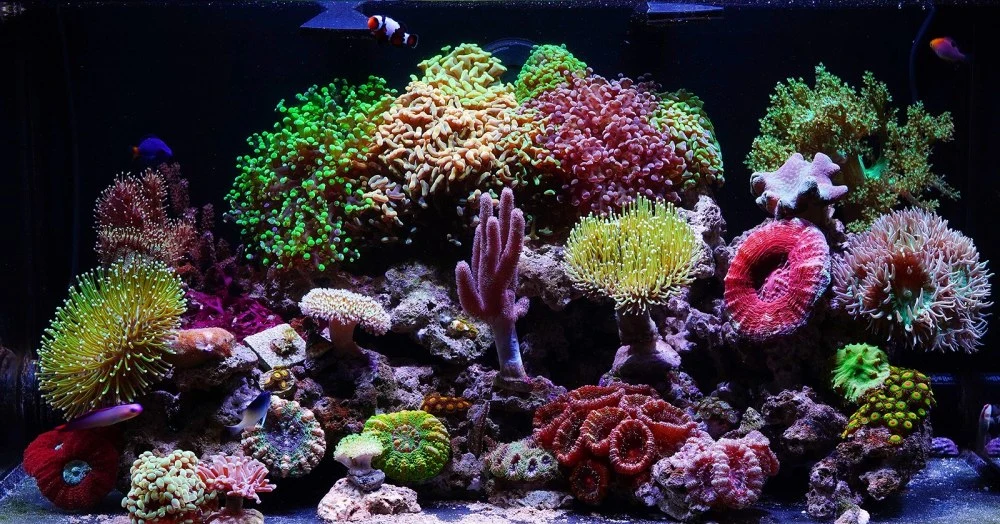Stunning 20-Gallon Reef Tank – spazizz's TOTM | NanoReef

Tank Specifications
Volume: 20 Gallons / 75 Liters
Dimensions (L × W × H):
24.0" ×
15.0" ×
13.0"
61.0cm ×
38.1cm ×
33.0cm
Equipment List
- Salt: Instant Ocean
Frequently Asked Questions
How often should I perform water changes in a nano reef tank?
It's recommended to perform water changes at least once a month. In this case, a water change of 50% or even ideally 100% is beneficial to maintain water quality and nutrient balance.
What type of salt mix is recommended for reef tanks?
Reef Crystals is a commonly used salt mix that has elevated levels of Calcium, Alkalinity, and Magnesium, which are important for coral health.
How can I maintain stable water parameters without extensive testing?
Instead of regular testing, you can gauge tank health by observing the appearance and growth of your corals. If they look healthy, you can continue your routine; if something seems off, performing a large water change can help reset conditions.
What feeding strategy should I use for the fish and corals in my tank?
Feed your fish with a varied diet, such as frozen blood worms, brine shrimp, and chopped fish, ideally every day. In addition, for LPS corals, regular feeding helps promote their growth and health.
What types of fish can I keep in a nano reef?
Some great options for a nano reef tank include Rolland's Damsel, Yellow Tail Damsel, Purple Firefish, and Green Dragonette. Always ensure to choose species that can coexist peacefully.
How do I prevent aggression between different fish species?
To minimize aggression, it’s important to introduce fish simultaneously and ensure that there’s adequate space and hiding places in the aquascape. However, be prepared for some territorial disputes especially with damsels.
What are some hardy coral options for beginners?
Some hardy coral choices include Soft Corals such as Toadstools and LPS such as Hammer corals. These tend to adapt well to various conditions and are more resilient.
What aquascaping techniques can help minimize maintenance?
Consider a bare-bottom aquascape to reduce detritus accumulation, which can lead to algae blooms. Additionally, create caves and shelves to provide hiding spots for fish and keep corals in optimal positions to minimize stinging.
Is it beneficial to use live rock in a reef tank?
Yes, using some live rock in conjunction with dry rock can introduce beneficial bacteria and help establish a more stable ecosystem. Aim for at least a couple pounds of well-cured live rock.
Why is it important to quarantine new fish and corals?
Quarantining new additions helps to prevent the introduction of parasites and diseases into your established aquarium. Every new fish should go through a tank transfer method for ich and parasite treatment.
What types of quarantine methods should I use?
Using a separate quarantine tank specifically set up for new arrivals is ideal. This can also include a tank transfer method for fish, treating them for any potential issues before adding them to your main tank.